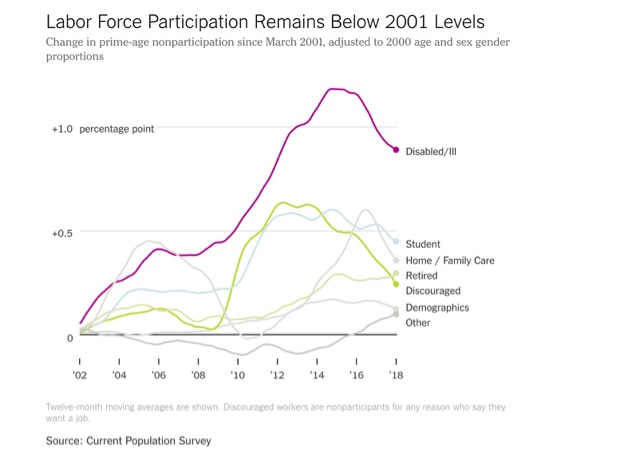Prime age labor force participation: disability and homemaking decline About a year ago I wrote a series of posts on various reasons for the relatively low labor force participation by prime age individuals, and its effect on wages; In my post summing up that study I wrote: A major element of the participation rate is comparison with other alternatives to being in the labor force. Two alternatives to labor participation appear to have had a significant effect on the rate. First, the cost of child care, which has soared over the last 15 years, compared with subdued (or paltry) wage growth has caused many women and some men as well in the prime age demographic to leave the labor force completely and instead raise their children as homemakers. A second
Topics:
NewDealdemocrat considers the following as important: Taxes/regulation, US/Global Economics
This could be interesting, too:
Joel Eissenberg writes How Tesla makes money
Angry Bear writes True pricing: effects on competition
Angry Bear writes The paradox of economic competition
Angry Bear writes USMAC Exempts Certain Items Coming out of Mexico and Canada
Prime age labor force participation: disability and homemaking decline
A major element of the participation rate is comparison with other alternatives to being in the labor force.
Two alternatives to labor participation appear to have had a significant effect on the rate.
First, the cost of child care, which has soared over the last 15 years, compared with subdued (or paltry) wage growth has caused many women and some men as well in the prime age demographic to leave the labor force completely and instead raise their children as homemakers.
A second alternative, which appears to be a major determinant of the decline in male participation at least over the last 60 years is the expansion of disability insurance. This increase in disability has been mainly due to neck and back conditions, and together with improved longevity, has increased the incidence of long-term disability dramatically.
It has also been suggested that the huge increase in the incarceration rate from roughly 1980 through 2000 has also played an important role in depressing participation.
The data shows that the decline has come almost entirely from the older half of the prime age population.

